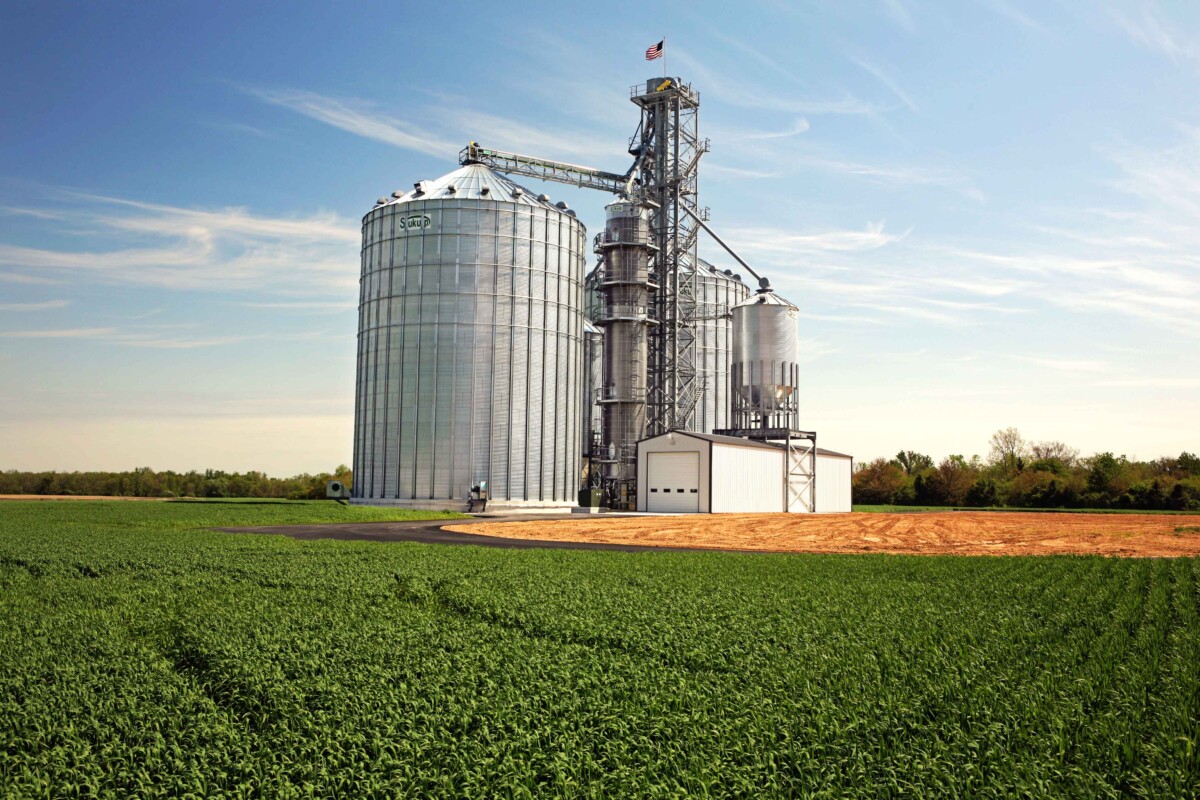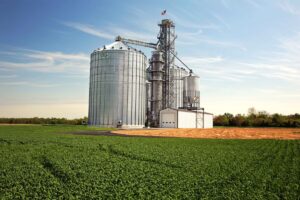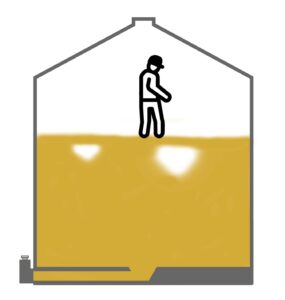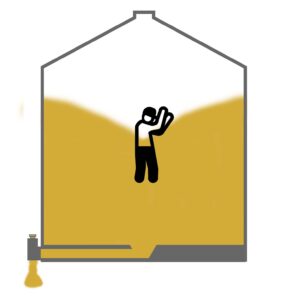
Grain Bin Safety
Grain bins store dry grain such as corn, soybeans, wheat, and oats before processing. They are metal cylinder structures available at varying heights with peaked metal roofs and typically have staircases or ladders and walkways on the outside.
 The bins are easily recognizable in agricultural areas because of their silver exteriors made from vented corrugated steel and wide diameter.
The bins are easily recognizable in agricultural areas because of their silver exteriors made from vented corrugated steel and wide diameter.
The hazards posed by grain bins are serious for agricultural workers and can be deadly. Moving grain behaves like quicksand, quickly trapping workers and causing suffocation. Therefore, it is crucial for workers to understand how a grain bin functions and how grain ‘behaves’ to ensure safe operation.
Flowing Grain
Grain enters the bin through elevators and exits it through an opening at the center bottom, using gravity to push it out. The movement of grain during this process causes it to move quickly, pulling grain to the center and down. A worker can quickly become trapped if the grain begins to move while they are inside.

Crusting or Bridging of Grain
When grain is stored, it can form a crust or bridge on the surface, allowing invisible voids (open spaces) to form below. This top layer of crust can collapse when the grain below moves or is weighted on. If a worker walks across this crust, it will break and they will fall into the grain below, quickly becoming buried.

Grain Piles
Grain can build up on the sides of the grain bin when stored in poor conditions. These grain piles or masses can collapse when being broken up, causing a grain ‘avalanche’ without warning. If a worker is next to these vertical piles of grain as they collapse, they will be buried instantly.
Grain can engulf workers in seconds. Once a worker is knee-deep in grain, they will not be able to escape without assistance, the pressure on their legs will be severe and they will quickly become unable to move. Training, site signage, and a buddy system are paramount to ensure safety when operating around grain bins.
Safety Tips for Employers:
- Provide adequate training and testing to ensure the competency of all employees working with grain bins.
- Provide long poles for employees to break up crusted grain without entering the bin.
- Provide safety harnesses and ropes for all staff who may need to enter grain bins.
- Ensure adequate staffing levels to allow a buddy system for any employee entering a grain bin; one employee to stand watch while the other enters the bin.
- Air testing equipment should be available to test the grain bin air before entry.
- Install ladders inside grain bins for emergency exits should an employee need to escape quickly.
Safety Tips for Grain Bin Operators:
- Always turn off and lock out powered unloading equipment, augers, and fans before entering.
- Wear a body harness with a lifeline or a boatswain’s chair before entering a bin.
- Don’t walk on the grain in a bin to encourage it to flow.
- Ensure you have a buddy stationed outside the bin; this person should be trained to assist you if you need help.
- Do not enter a bin when bridging or grain build-up on the sides has occurred.
- Always stay near the outer wall and keep walking if the grain should start to flow. Get to the bin ladder or safety rope as quickly as possible.
- Test the air in the bin before entering to ensure sufficient oxygen and no combustible or toxic gases are present.
- When working in a grain bin wear a dust filter or filter respirator.
Workers should only be entering a grain bin when absolutely necessary and when other workers are available to assist. All employees working on-premises with grain bins should be trained on the hazards and the safety precautions needed to minimize risks. Additionally, signage at the facility should remind staff of the dangers and necessary safety precautions for grain bins.



